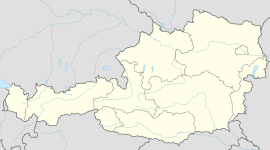Itter
| Itter | ||
|---|---|---|
 |
||
|
||
| Location within Austria | ||
| Coordinates: 47°28′14″N 12°08′38″E / 47.47056°N 12.14389°ECoordinates: 47°28′14″N 12°08′38″E / 47.47056°N 12.14389°E | ||
| Country | Austria | |
| State | Tyrol | |
| District | Kitzbühel | |
| Government | ||
| • Mayor | Johann Gratt | |
| Area | ||
| • Total | 10.44 km2 (4.03 sq mi) | |
| Elevation | 703 m (2,306 ft) | |
| Population (1 January 2016) | ||
| • Total | 1,162 | |
| • Density | 110/km2 (290/sq mi) | |
| Time zone | CET (UTC+1) | |
| • Summer (DST) | CEST (UTC+2) | |
| Postal code | 6305 | |
| Area code | 05335 | |
| Vehicle registration | KB | |
| Website | http://www.itter.tirol.gv.at | |
Itter is a municipality in the Kitzbühel District in the Austrian state of Tyrol located 18.60 km west of Kitzbühel, 5 km southeast of Wörgl, and 2.5 km north of Hopfgarten im Brixental. The village lies on a terrace above the Brixental valley and its main source of income is tourism.
The small castle of the village, Itter Castle, was a prison for French high personalities during World War II. Two days before the war ended, a battle was fought there against the Waffen SS, the only occasion when American and German forces fought on the same side during the war.
...
Wikipedia


